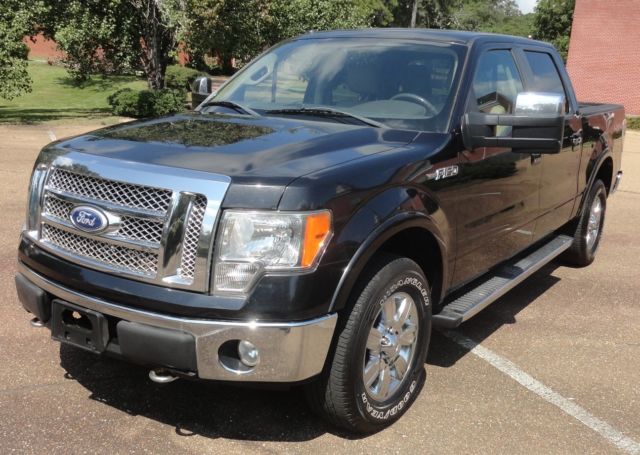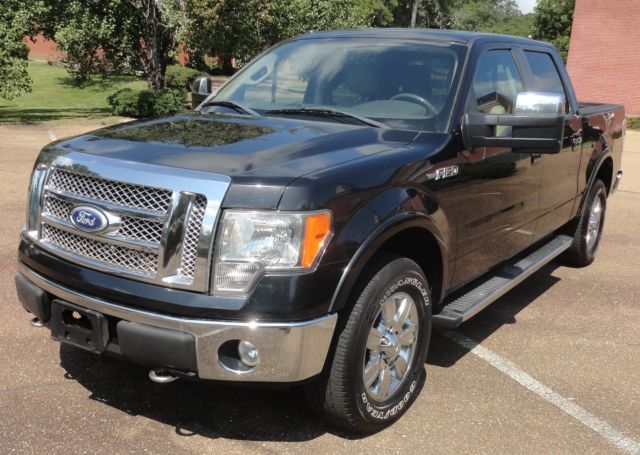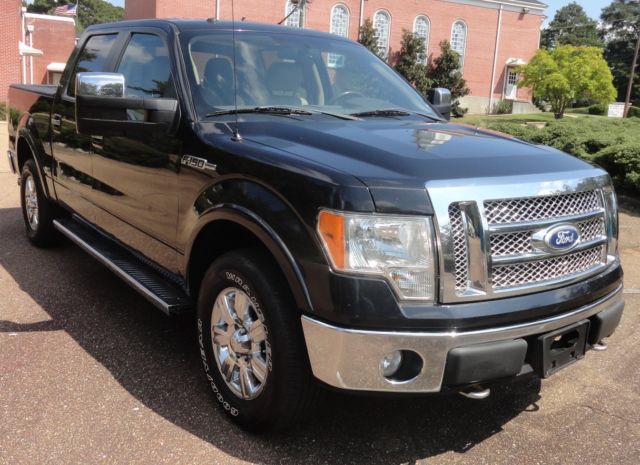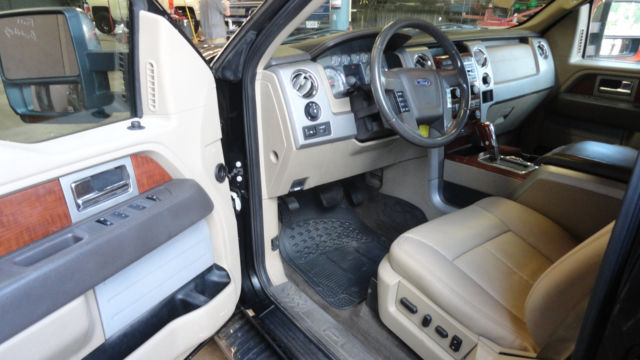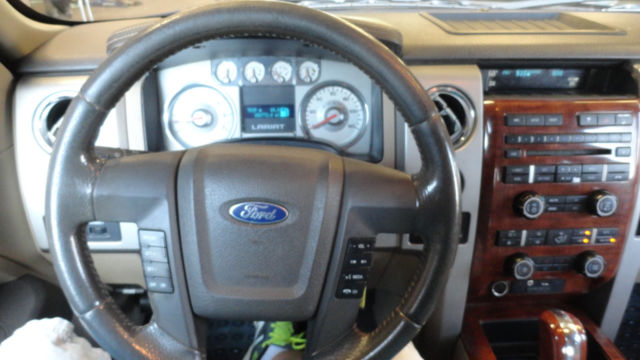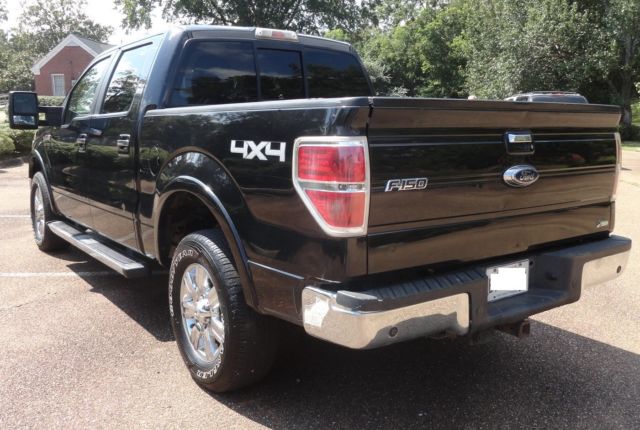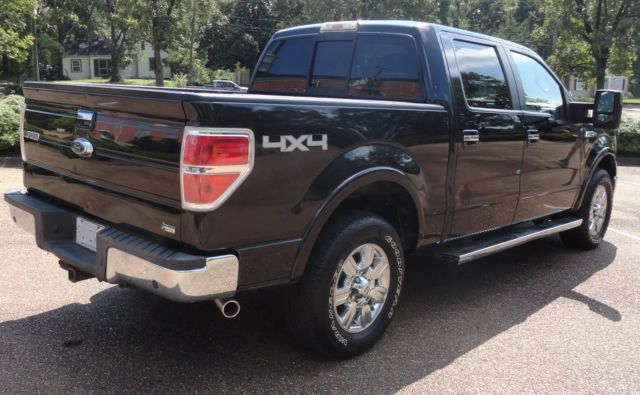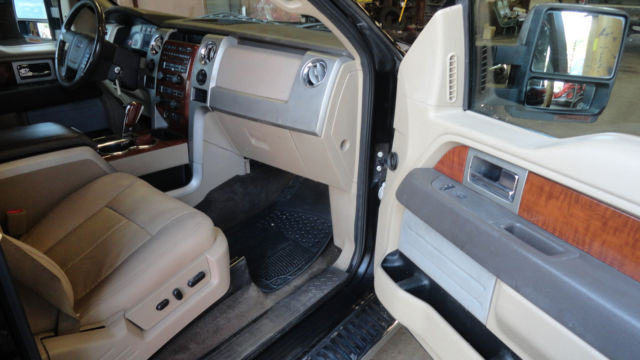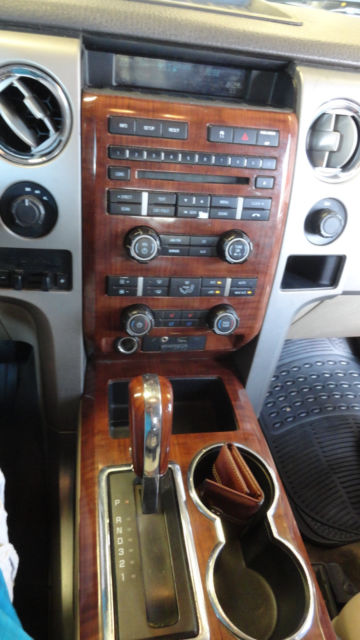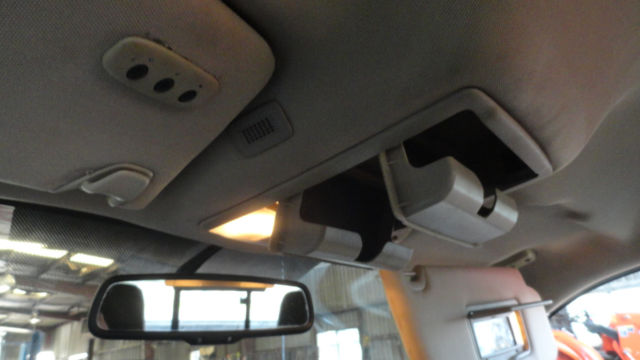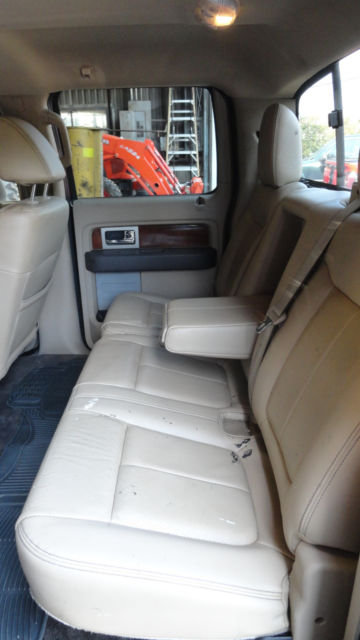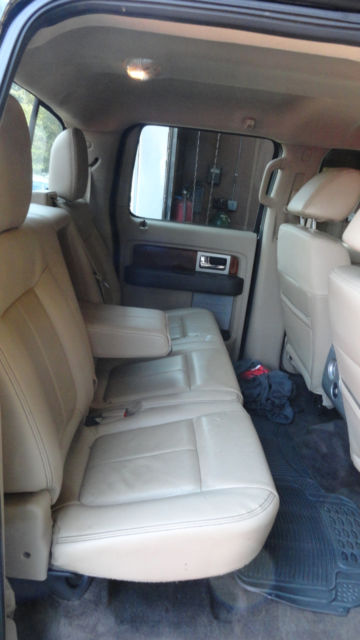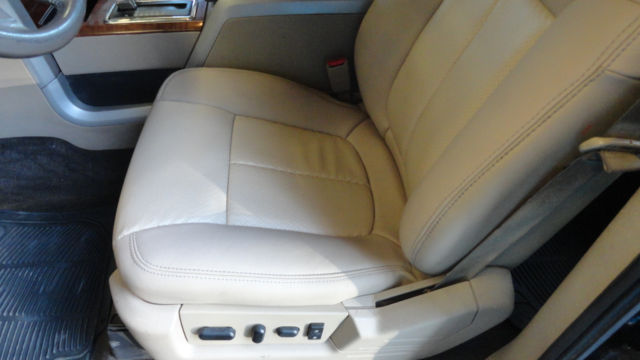HEATED COOLED SEATS Bedliner 6CD Auto Climate BLUETOOTH
- Make: Ford
- Model: F-150
- SubModel: LARIAT PLUS 4X4 4WD CHROME PKG CREW CAB SWB LOADED
- Type: Crew Cab Pickup
- Trim: Lariat
- Year: 2010
- Mileage: 282
- VIN: 1FTFW1EV6AFB96737
- Color: Black
- Engine size: 8 Cylinder Engine 5.4L/330
- Number of cylinders: 8
- Power options: Pwr front & rear disc brakes, Pwr rack & pinion steering, Air Conditioning, Cruise Control, Power Locks, Power Windows, Power Seats
- Fuel: Flex Fuel
- Transmission: Automatic
- Drive type: 4WD
- Interior color: Tan
- Safety options: Anti-Lock Brakes, Driver Airbag, Passenger Airbag, Side Airbags
- Options: 5" CHROME RUNNING BOARDS, AM/FM STEREO W/SONY 6-DISC IN-DASH CD & MP3 CHA..., LARIAT CHROME PKG, LARIAT PLUS PKG, MANUAL HEATED TELESCOPING TRAILER TOW EXTERIOR ..., MAX TRAILER TOW PKG, SKID PLATES, TRAILER BRAKE CONTROLLER, 3.73 AXLE RATIO W/LIMITED SLIP DIFFERENTIAL, 5.4L 3V EFI V8 FFV ENGINE, STANDARD EMISSIONS, 6-SPEED ELECTRONIC AUTOMATIC TRANSMISSION W/OD,..., TAN, LEATHER HEATED & COOLED FRONT CAPTAINS CHA..., LARIAT SERIES ORDER CODE, LT275/65R18C ALL-TERRAIN OWL TIRES
- Vehicle Title: Clear
- Interested?
2010 Ford F-150 Lariat Description
2010 FORD F150 LARIATFOUR WHEEL DRIVE
5.4 TRITON V8
LARIAT PLUS PACKAGE
CHROME PACKAGE
3.73 LIMITED SLIP DIFFS
HEATED/COOLED LEATHER SEATS
18" ALLOY WHEELSAM/FM STEREO 6CD WITH BLUETOOTH
BACKUP CAMERA
SPRAY-IN BEDLINER
BED EXTENDER
GOODYEAR TIRES
CALL OR TEXT 601-376-9869 FOR MORE INFO OR PRICING
WATCH THE VIDEO IN 720 HIGH DEF! WATCH TO THE END FOR THE TEST DRIVE!
https://www.youtube.com/watch?v=28GVehvPeTs
EBAY WON'T LET US EMBED VIDEOS ANYMORE. YOU'LL HAVE TO CLICK THE LINK BELOW TO SEE IT.
CLICK HERE TO WATCH THE VIDEO!
Values & Cost Details RoughTrade-In Average
Trade-In Clean
Trade-In Clean
Retail Base Price $14,000 $15,525 $16,800 $20,225 Mileage (282,000) -$4,450 -$4,450 -$4,450 -$4,450 Total Base Price $9,550 $11,075 $12,350 $15,775 Options (change) Sony Stereo System $300 $300 $300 $350 Fixed Running Boards $50 $50 $50 $75 Bed Liner $50 $50 $50 $75 Towing/Camper Pkg $250 $250 $250 $300
Price + Options $10,200 $11,725 $13,000 $16,575 2010 Ford F-150 Review by G. R. Whale Introduction
The Ford F-150 is the best-selling pickup in America. The F-150 lineup offers a plethora of models in dozens of permutations. All are highly capable trucks, even those loaded with luxury features. The F-150 was completely redesigned for 2009. So for 2010, changes are limited to packaging.
Smooth and quiet, the F-150 is comfortable on bumpy streets around town, over rugged terrain such as that found at construction sites, and on the open road. Its steering is nicely waited and requires little correction on the highway making it nice for long cross-country tows. The cabs are comfortable, whether ordered with leather or cloth.
The F-150 lineup runs the gamut from wash-off vinyl flooring and a two-door Regular Cab to leather-lined premium four-door models with as much rear-seat legroom as the front of most luxury sedans: Within those extremes lies something for everyone. Yet even the least-expensive F-150 isn't boring; it leaves room for customization, does the work required and keeps overhead down.
With one of the deepest beds in the segment, the F-150 has generous cargo volume out back and a maximum payload rating of 3,030 pounds. A properly equipped Regular Cab F-150 is rated to tow up to 11,300 pounds; other models max out in the 9,000-pound range. (The Ford Super Duty range of heavy-duty pickups is covered in a separate New Car Test Drive review.)
Three V8 engines are offered. A 248-hp 4.6-liter V8 is standard with four-speed automatic transmission, with EPA ratings of 15/19 mpg City/Highway. Most higher-line trucks come with a three-valve-per-cylinder version of the 4.6-liter rated at 292 horsepower and a six-speed automatic transmission that gets improved highway mileage, achieving an EPA-estimated 15/21 mpg.
A 5.4-liter flex-fuel V8 is the largest offered and comes with the six-speed automatic. It is rated at 310 horsepower and 365 pound-feet on gasoline (EPA 14/20 mpg) and 320 horsepower and 390 pound-feet on E85 with mileage dropped to 10/14 mpg. Four axle ratios are offered to maximize work and efficiency.
The 2010 F-150 King Ranch and Platinum models feature second-row heated seats, a power sliding rear window with defroster, and a Sony six-disc in-dash CD changer. The MyKey programmable vehicle key is standard on all models except the base XL trim level. Two-wheel-drive models with the 4.6-liter three-valve-per-cylinder engine have EPA fuel economy ratings of 15/21 mpg City/Highway. Model Lineup
Counting all the trim levels, cargo-bed lengths, cab sizes, and powertrains, the Ford F-150 comes in dozens of configurations, so it's easier to define which setups you can not get: No two-wheel-drive FX4 trim level, no luxury trim Regular Cab, no short-bed Regular Cab, and no long-bed SuperCrew. Everything else is split amongst five wheelbases, three cab sizes, three bed lengths (one of which is available in two styles), three engines, seven trim levels, and rear- or four-wheel drive.
Regular Cabs are offered in standard bed (about 6.5 feet) and long bed (about 8 feet) XL, STX, or XLT grades; the standard bed is also available in a Flareside style that harkens back to original pickup trucks where there was a side step ahead of the rear wheels. SuperCab trucks add higher FX4 and Lariat trim levels, and a short-bed option (about 5.5 feet) on all but XL models. The Flareside bed can not be combined with XL or Lariat SuperCabs. A long-bed SuperCab is available only with the heavy-duty 5.4-liter package. The SuperCrew F-150, available with either the short or standard bed, drops the STX grade and adds King Ranch and Platinum derivatives.
The F-150 XL ($21,380) is a standard bed, Regular Cab two-wheel drive. It comes with 17-inch steel wheels, black bumper/grille/mirrors, and vinyl upholstery and floor covering. XL includes air conditioning, split front bench (and rear on four-door cabs), locking tailgate, tilt steering wheel, stability control, capless fuel filler and a stereo radio.
STX (from $24,405) models add body-color bumpers over a black grille, CD player, and cloth seats with driver lumbar. More equipment is available, including 18-inch wheels, Sirius radio, SYNC, cruise control, fog lamps and power mirrors.
XLT (from $25,575) adds chrome for bumpers and trim, power mirrors, remote keyless entry, automatic headlamps, carpeting, cruise control, power windows and locks, better cloth upholstery and, on longer cabs, the three-valve 4.6-liter V8 and six-speed automatic transmission. All manner of options are available on the XLT, including three sizes of wheels, tailgate step, cargo management and towing equipment.
FX4 (from $35,090) comes with a black grille and body-colored bumpers, trim and mirrors. Electric-shift 4WD is standard, as are fog lamps, a locking differential, towing package, 18-inch wheels, sporty cloth split bench seat (power driver on four-doors), Sirius radio, and the 5.4-liter V8/six-speed automatic powertrain. Options include infotainment and 17-inch (for more severe off-road use) or 20-inch wheels.
Lariat (from $33,205) is the mainstream luxury F-150 and hence is four-door only. Chrome trim and bumpers highlight monotone paint, and the Lariat adds heated mirrors with signal repeaters and auto-dimming on the driver's and inside, dual-zone climate control, heated power leather seats with driver memory, leather wheel with redundant audio controls, tow package, SYNC, trip computer, and power adjustable pedals. Options include 20-inch wheels, heated/cooled front seats, Sony sound and navigation, trailer brake controller, rear camera and park sensors, and moonroof.
King Ranch (from $40,200) is like a Lariat with a different attitude. It adds two-tone paint and KR badges, unique wheels, mesh chrome grille, Chaparral leather heated and cooled power captainÆs chairs with driver memory, running boards, and power folding, heated, signal outside mirrors with chrome caps. Options are essentially limited to a limited-slip differential, alternative axle ratios, 20-inch wheels, Sony sound and navigation systems, moonroof, chrome tube running boards and remote start.
Platinum SuperCrew (from $42,075) gets a unique satin chrome grille and the only one not styled as three sections, body-color bumpers and wheel lip moldings, 20-inch wheels, power-deploy/retract running boards, satin chrome tailgate trim, tuxedo-stitched leather power captainÆs chairs, wood grain and brushed aluminum trim, rain-sensing wipers, power folding/heated mirrors, and unique console. Options are limited but you can get 17-inch wheels and all-terrain tires for luxury on the farm.
Ford's SVT division offers the Raptor version, intended for serious off-road use. It will start with the 310-hp 5.4-liter V8 and later get a high-performance engine option, a 6.2-liter V8 of about 400 horsepower and 400 pound-feet of torque. But it is the long-travel high-performance suspension, wheels and tires that set it apart, and the assertive styling.
The F-150 option list is comprehensive and, although it has been simplified in recent years, it can still resemble the tax code to the uninitiated; there are, for example, three codes for a sliding rear window and five for trailer towing mirrors. Most options are dependent on the model and other options, and many features are standard on more expensive models. In addition, sometimes the prices of the options vary by trim level.
Mechanical options include upgrades to either the three-valve 4.6 engine or the 5.4-liter, alternate axle ratios, limited-slip differential, larger tires and upgraded wheels, electric-shift 4WD, skid plates, towing mirrors, snow plow prep, trailer brake controller, 35-gallon long-bed fuel tank, tailgate step, heavy-duty payload package, and Ford Works systems like an in-dash computer. An engine block heater is available to fleet buyers and standard on Alaska and northern plains-state trucks. Other upgrades include captain's chairs bucket seats with center console, power sliding rear window, rear-view camera, reverse parking sensors, dual-coat or two-tone paint, moonroof, Sirius radio, sound systems, remote start, and navigation.
Safety features that come standard include antilock brakes, stability control (AdvanceTrac RSC), Trailer Sway Control, frontal airbags, front side airbags, and side curtain airbags. Safety-related options include an integrated trailer brake controller, rear-view camera, and reverse park sensors. Walkaround
The angular lines of the Ford F-150 mean it's easier to clean, easier to park, and gives maximum inside volume for outside space. Some bulge to the hood and large grille openings imply power, as does the higher altitude of 4WD models; many models have big graphics to ensure everyone knows what it is. The F-150 is easily recognized in any trim level by the circular front lights within a rectangular housing, stepped front window ledge, and the tall bed.
The front door edge that allows a lower glass line at the front is stylish but also very useful; it allows a better view of front quarters near the truck and means you can have a good-sized mirror that doesn't limit forward vision because you look over it rather than around it. The view rearward can be aided by extendable towing mirrors, a rear camera, and a power sliding rear window. We found the towing mirrors work very well.
Pillars between the doors (called B-pillars) and the rear hand-hold on the pillar may yield an awkward blind spot for some drivers, but everyone should appreciate the windshield pillars (called A-pillars) shaped to help preserve forward vision. Relatively square shoulders on the hood make it easy to see the edges of the truck, a bonus for tight parking lots, plow operators, and squeezing between trees or rocks en route to outdoor recreation.
The F-150 is a rarity in modern pickups in that it offers two bed designs. The Flareside is shaped to mimic pickups of old, when the box walls were between the wheels and you could stand on the sides for loading. Ironically, the Flareside is more stylish than the Styleside bed. The standard Styleside bed is essentially a box with some character lines in the sheetmetal. It offers more space within than does the Flareside bed.
With all beds you can get a locking tailgate and tie-down points. On many models you also get a bed extender and tailgate step (rated 300 pounds); the tailgate step makes stepping into the bed easier but it makes the tailgate feel heavier than some petite drivers will want to open or close. Some models offer a box-side step rated at 500 pounds; a pop-out, under-bed step behind the cab, but we needed considerable effort to return it and wonder how it will work after grounding on a rocky trail, having mud or snow thrown at it, or in freezing weather. Long bed models may be equipped with a Midbox enclosed storage space at the leading edge of the bed for 26 cubic feet of locked storage area, a great feature for stowing towing equipment and other gear. Refueling is done with Ford's capless filler system so you will never lose another gas cap.
Every F-150 except the Platinum has a horizontal three-bar aspect to the grille and the tailgate styling; the larger grille, stacked headlights and more heavily contoured hood all add to the imposing size, though it isn't as imposing as Dodge's forward-leaning grille setup. On higher-level models the chrome is considerable, and extends to the front tow loops on 4WD.
The FX4 model has plenty of decals and real truck tires if you choose the 17-inch off-road tire option. The chassis on 4WD models doesn't have anything mounted much lower than the frame rails, but if you intend to use four-wheel drive for anything more than snow or muddy roads the skid plate package should be considered. Interior
Ford has all bases covered inside the F-150, with plenty of patterns, textures and finishes, including multiple gauge cluster designs, and the choice of a 40/20/40 split-bench front seat or captain's chairs in many models. On those trucks with a bench seat, the middle passenger should be of a smaller size for both knee clearance and the narrow space between seat and belt brackets.
Mindful that you can't have everything for $21,000, the basic XL is quite respectable and a good value given a single option tab on a bigger pickup can be nearly half the XL's purchase price. Fleet drivers will appreciate that air conditioning is standard and the truck is quieter and smoother, in part due to a standard V8 where Dodge, GM, and Toyota use a V6.
At the other end of the spectrum, the Platinum is like a Lincoln Navigator with a pickup bed. The King Ranch chairs may look like a fine saddle (and require the same maintenance in some climes), but you'll want to ensure the jeans are clean and spurs off before you climb into this cowboy clubhouse.
Virtually everything you might need is either standard or available, and much the same degree of luxury in a more subdued style can be found in Lariats, which follow a more eclectic approach to decor and make one wonder if seven colors and surface textures on a rear door alone might be one or two too many. The speaker grilles on high-line models that look like metal really are (with the three horizontal bar theme molded in), and in some cases the trim is real brushed aluminum. The wood is faux, perhaps to save trees.
The front bench is still split three ways: The center section flips down to reveal a console with storage and cup holders. The console is flat, so you can put a clipboard on top of it and it won't slide off until you stop, start or change direction quickly. Captain's chairs on FX and Lariat models, especially with power adjustment and the optional adjustable pedals, provide good driver positioning for virtually everyone. The seat bottoms may be lacking in thigh support for longer-legged drivers, and the headrests are aggressively tilted forward and may wear on neck muscles unless you have the seatback fairly reclined.
Front and rear-seat room is very good; the rear is a vast, spacious area for three adults with a flat floor all the way across and full roll-down windows. On the down side, it could take a while to cool off in hot conditions, and the floor mats cover only a third of the carpet by our tape measure.
The rear seat cushions lift up to stow vertically, with four grocery bag hooks on the underside of the wider driver-side seat and, if equipped, the subwoofer for the Sony sound system under the right rear seat; rear cabin storage seats-up amounts to nearly 58 cubic feet. With captain's chairs up front there are vents in the back of the center console. There are three tethers and two anchor sets for baby seats, outboard rear headrests raise enough to protect tall passengers, but there is no center rear headrest.
We sampled a couple of Lariats, one with bucket seats and white-stitched black leather, the other a 40/20/40 bench in tan leather; the lighter color interior looked richer, but also busier since it had dual colors for the dashboard where the black truck didn't. Either seat is comfortable, the advantage of the bucket being goodies like heating/cooling on higher trim models. Most of the touch points on Lariat felt good, with a sort of rubberized texture to the door armrests, but there is still plenty of hard plastic in pillar covers and lower doors to ease cleaning.
The cloth upholstery in the STX feels comfortable and durable; in temperature extremes we'd prefer it to the leather on the Lariat. Apart from seat coverings and the steering wheel, the STX doesn't feel overly budget conscious.
All models use the same basic dash layout, with tachometer to left (no marked redline), speedometer to right, and oil pressure, coolant temperature, fuel and transmission fluid temperature lined up between. On lower-level models the gauges are more traditional white-on-black and, on higher-line models, silver faces with dark numbers that light up green and are often easier to read at night than in daylight. The ancillary gauges are quite lethargic so you need to heed warning lights even if a gauge doesn't quite agree.
Trucks with the Sony navigation/audio system have arguably simpler controls than those without it by virtue of the voice command, logical operation and system integration. Trucks without that option aren't bad, but even on the second-lowest-level STX we counted more than 40 white-on-black buttons on the center panel which could require some familiarization. Window switches are all lift-to-close but the power door lock bar is horizontal so if Rover puts his paw on the right part of the switch you can be locked out.
Bench seat models use a column-mounted shift lever, while most bucket seat models use a bigger console shift lever, both with a Tow/Haul mode. Although most trucks are six-speed automatics the shifter offers only D321 positions so you can't always pick the gear you want for towing or inclines. Liberal chrome on the console can produce some distracting glare.
Headlights and pedal adjustment are to the left, four-wheel drive and the integrated trailer brake controller are to the right. Four round omni-directional vents ensure airflow where you want it, front seatbelt anchors are height-adjustable, and our only ergonomic complaint was the lack of a sun visor that covered the length of the side glass.
The Sony navigation/sound system and Ford's SYNC system bring infotainment to a new level, integrating Bluetooth-enabled devices, 911 Assist, Vehicle Health report, Sirius travel link with real-time traffic, weather, 4500 movie theater listings and show times and 120 gas stations with fuel prices. Power points, a USB port and MP3 input jack are in the lower center dash. The Sony 700-watt 5.1 channel sound system provides very good sonic quality, even if the impact didn't feel like 700 watts. It has the usual assortment of graphics nonsense like the oxymoronic-titled audio visualizer, which we could live without.
Pickups without space are pointless and the F-150 won't disappoint. The Regular Cab is roomy enough to fit three adults across and has plenty of space for the miscellaneous debris and detritus that tends to accumulate in trucks. SuperCabs have a full-width back seat best-suited to kids and short rides for bigger adults since legroom is the squeeze point; it's similar in size and intent to the Chevy Silverado or GMC Sierra extended cab or the Titan King Cab. For larger families or routine four-passenger service, the SuperCrew's room and regular back doors will be welcome, with as many as 30 different places to put things. Driving Impressions
The Ford F-150 is among the heavier trucks in its class, contributing to a solid feel and none of that empty metal box bang-and-clang that characterized pickups of old. There's an impression of substance and tight construction regardless of the road surface or the model.
What stands out most driving the F-150 is the verve from the six-speed transmission and that it feels so quiet and smooth. Ford attributes much of this to ongoing refinement and the Quiet Steel laminate used in some body panels. Ford notes the F-150 Platinum is quieter inside than a Lexus LX450 at highway speeds and to our ears this is accurate. Granted, the LX450 was last produced 11 years ago and was a genuine four-wheel drive with solid axles at both ends; we believe the current LX570 to be a smoother, quieter and more expensive ride than an F-150 Platinum.
The two-valve, 248-hp 4.6-liter V8 is standard and able to tow a ski boat, utility trailer, small toy box, or a couple of tons of dirt.
The primary reason to upgrade to the three-valve 4.6-liter (from the two-valve 4.6-liter) is because you get more of everything: Despite an extra 44 horsepower and 26 pound-feet of torque it has equal or better EPA fuel economy ratings than the two-valve engine because it comes with a six-speed automatic transmission. This makes the engine work less to accelerate and run slower at highway speeds; 70 mph at 2000 rpm with middling axle ratios.
The 5.4-liter V8 remains the top engine. Its power output is often erroneously reported as 320 hp and 390 lb-ft of torque; those ratings apply to E85 use where EPA Combined rating is 12 mpg. On gasoline, the 5.4-liter makes 310 hp and 365 pound-feet of torque and an EPA Combined rating of 16 mpg. Of all half-ton pickups Ford's 5.4-liter is the least powerful of the upgrade engines, slightly trailing the Nissan Titan and way behind the Dodge Hemi, GM 6-liter or 6.2-liter, and Toyota's 381-hp 5.7-liter. Only a GM with a four-speed automatic might be slower, so if you want a truly fast F-150 you'll have to consider aftermarket upgrades.
Both the four- and six-speed automatics work smoothly, anxious to get into that fuel-saving top gear as soon as possible; engaging Tow/Haul mode will stretch out the shift points and not require a carpet-flattening mash of the pedal to affect a downshift. On long descents or climbs where you might prefer to use fifth-gear instead of sixth you don't get the choice because the shifter offers just D321 positions; other half-ton pickups are superior in this respect.
The F-150 has a fully boxed frame, which is quite stiff and resistant to both bending and twist. The front suspension is a dual ball-joint design pioneered and still used by BMW and found on the Expedition sport-utility, while the rear suspension has long leaf springs and outboard shocks.
The sheer mass of the F-150 combines with that architecture to deliver a very good ride (by pickup standards) and quiet composure. Sure, it will skip on bumpy corners and move around over dry wash scrabble at speed but it doesn't get upset or noisy. The steering is nicely weighted and requires little correction because of good directional stability. Longer wheelbases will still bob or pogo-stick on some expansion joints and expressway surfaces but it never becomes fatiguing.
Brakes get the job done with their ultimate performance based as much on tire choice and weight in the bed as anything else. Electronic stability control and anti-lock brakes are standard across the board. The FX4 offers a locking differential option for the best traction, and in many cases the suspension tuning on an FX4 produces the best ride quality over marginal roads and city potholes.
Some of the factors that aid visibility also hinder it. The tall stance of a pickup is good for more distant views but hides things behind the tall tailgate and this is a wide piece of equipment. Extendable towing mirrors include a flat upper element and separately adjustable wide-angle element for a superb view rearward and safe towing but they are big and will be easily smacked off if you forget about them.
The rearview camera is good for the view behind the tall tailgate and on the navigation screen has colored lines to indicate the width of the truck and centerline for hitching a trailer; however, this display is not predictive and does not move the colored lines with the steering wheel so it applies only in straight reversing. Rear park sensors also aid maneuvering in tight quarters, raising the frequency of audible beeps as you move closer. You'll want to turn that off when backing up to a trailer or in other situations, but that involves going through a couple of menus on the information screen, more tedious than the simple defeat buttons used by Toyota and others.
The payload rating for the F-150 models varies from about 1,340 pounds to just over 3,000, but that includes occupants other than the driver. A construction crew of four 200-pounders in a SuperCrew might have just 700 pounds of rated capacity left for tools and materials. The highest gross combined rating (truck, trailer, cargo, passengers) for any F-150 is 17,100 pounds and these pickups are among the heaviest half-tons.
Maximum tow ratings for most F-150 models range from 11,000-11,300 pounds with the 5.4-liter V-8 and 3.73:1 axle ratio that might not be available in the trim or in combination with the wheels you want. These are the highest tow ratings of any half-ton, though we tend to prefer staying below 9,000 pounds as a maximum comfortable trailer weight for light-duty pickups.
The integrated trailer brake controller option is the ideal choice for smooth braking, but only with conventional electric drum trailer brakes; as with the majority of these systems the integrated controller is not certified for electro-hydraulic brakes. As mentioned, the available rear camera helps when hitching up a trailer. Summary
The Ford F-150 delivers a strong combination of style, interior comfort, performance, ride and hauling ability. With multiple choices in trim, drivetrains and body styles, there's an F-150 for every type of pickup owner.
NewCarTestDrive.com correspondent G.R. Whale reported from Los Angeles after his test drive of several F-150 models.
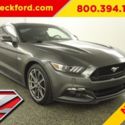 5.0L V8 Heated Cooled Leather Seats Backup Cam Dual Climate Bluetooth XM
5.0L V8 Heated Cooled Leather Seats Backup Cam Dual Climate Bluetooth XM
Mileage: 5,608
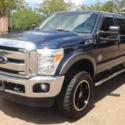 4X4 HEATED/COOLED SEATS Bedliner 20" MOTO METALS Leveling Kit BACKUP CAMERA Nice
4X4 HEATED/COOLED SEATS Bedliner 20" MOTO METALS Leveling Kit BACKUP CAMERA Nice
Mileage: 166,404
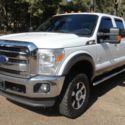 TOUCHSCREEN Heated/Cooled Seats SYNC Bedliner SIRIUS Tow Command NERF BARS Clean
TOUCHSCREEN Heated/Cooled Seats SYNC Bedliner SIRIUS Tow Command NERF BARS Clean
Mileage: 169,078
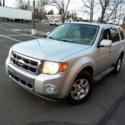 NO RESERVE SUNROOF PARKTONIC LEATHER HEATED SEATS BLUETOOTH DUAL CLIMATE CONTROL
NO RESERVE SUNROOF PARKTONIC LEATHER HEATED SEATS BLUETOOTH DUAL CLIMATE CONTROL
Mileage: 75,216
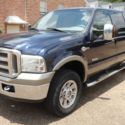 HEATED LEATHER SEATS Tow Command UPFITTER SWITCHES Power Pedals AUTO CLIMATE
HEATED LEATHER SEATS Tow Command UPFITTER SWITCHES Power Pedals AUTO CLIMATE
Mileage: 168,010
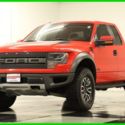 Like New Navigation Heated Cooled Seats Bluetooth 15 16 2015 14 Extended Cab 6.2
Like New Navigation Heated Cooled Seats Bluetooth 15 16 2015 14 Extended Cab 6.2
Mileage: 16,331
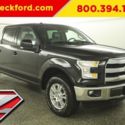 5L V8 Automatic 4WD Leather Seats Reverse Camera Heated Cooled XM Bluetooth
5L V8 Automatic 4WD Leather Seats Reverse Camera Heated Cooled XM Bluetooth
Mileage: 19,610
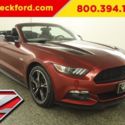 5L V8 Manual Transmission RWD Leather Heated Cooled Seats Backup Cam Bluetooth
5L V8 Manual Transmission RWD Leather Heated Cooled Seats Backup Cam Bluetooth
Mileage: 17,257
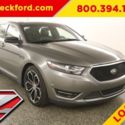 3.5 EcoBoost AWD Moonroof Leather Seats Heated Cooled Navigation XM Bluetooth CD
3.5 EcoBoost AWD Moonroof Leather Seats Heated Cooled Navigation XM Bluetooth CD
Mileage: 61,835
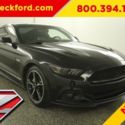 5.0L V8 Manual Transmission Heated Cooled Leather Seats Navigation XM Bluetooth
5.0L V8 Manual Transmission Heated Cooled Leather Seats Navigation XM Bluetooth
Mileage: 28,038
